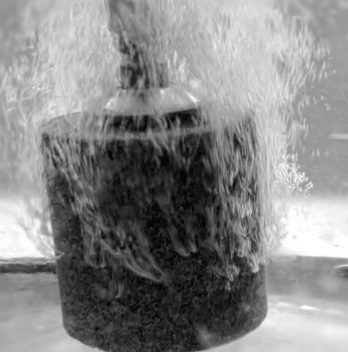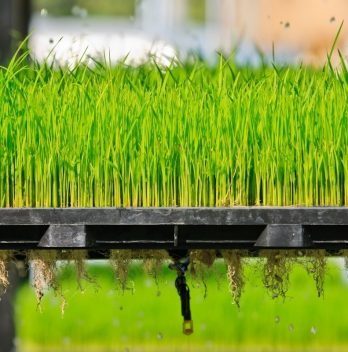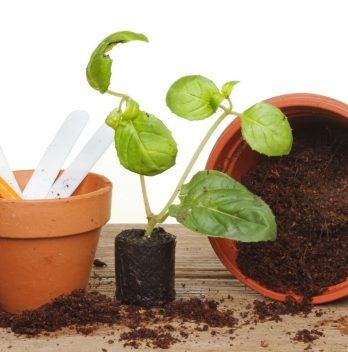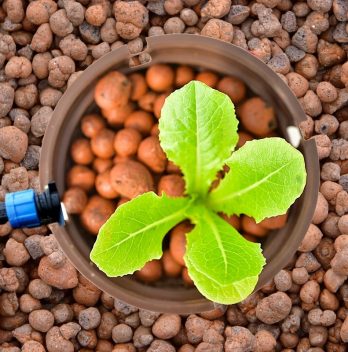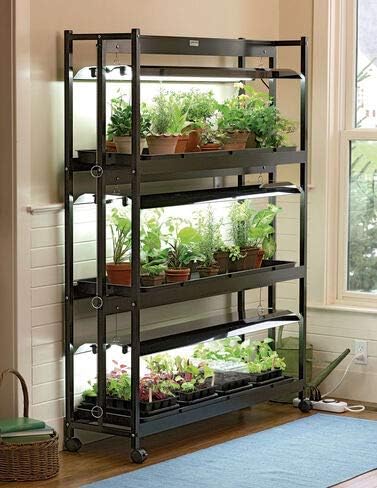You may be one grower that replaces your air stones frequently. But do you know you can clean your airs stones, reuse them, and save some little money? This is why we will be teaching you how to clean an air stone and renew its effectiveness.
Air stones will help aerate your plant roots by creating bubbles in a hydroponic system. As these stones work hard to provide oxygen to your plants’ root, they may slowly lose their effectiveness. This may be as a result of the surface inside your tank getting clogged as time goes on. Thus, the need for cleaning.
Even though air stones are cheap to purchase and most growers just replace them, you can actually clean them to rejuvenate their value. So, let’s dive in and discuss how to clean an air stone for your plants’ benefit.
What Is Air stone?
Airstone is a piece of porous stone or lime wood. They help create bubbles in water and are used to aerate hydroponic tanks or fish tanks.
The bubbles produced are pushed through the system with the help of an air pump and the bubbles allow oxygen to be dispersed throughout the system. The air stones are usually immersed in a water tank of the nutrient reservoir.

How To Clean An Air Stone & Restore Their Effectiveness
Usually, air stones may start to lose their effectiveness around 6 weeks of use. However, this can differ depending on the mineral composition of your water. Cleaning your air stones not only removes dirt, but also disinfects them from bacteria, algae, and even dust.
Even though cleaning your air stones may take some time, it is, however, a great way of extending its use. So, let’s take a look at how to clean an air stone in order to restore their good working conditions and perform like new.
How To Clean Air Stones
Step 1
Turn off or disconnect your air stones and take them out of your tank. Go ahead and rinse the air stone in fresh or clean water. Then gently scrub off any excess build-up from the outer part and ensure you don’t scrub too hard.
Step 2
Next, allow your air stone to boil for ten minutes on low heat. Doing this will help take out internal dirt from the air stones at the same time sterilize the stone. After boiling, allow them to cool down and let them dry.
VIVOSUN Air Stone 2PCS 4 X 2 Inch Large Air Stone for Aquarium and Hydroponics Air Pump
Step 3
When the air stones are dry, the next step is to soak them in a cleaning solution. Soak them in a mixed bleach and water of ration 1 to 3 respectively. Soak them for 24 hours or two days depending on dirty your air stones are.
Bleaching can as well destroy any leftover bacteria that may be hiding deep inside the stones.
Step 4
The next step is to rinse off all the bleach. You can go ahead to attaching an airline from an air pump to the air stone and immerse it in clean water. This will further rinse off any residual bleach or even dirt.
Step 5
The next and final step is removing the air pump and allowing the air stone to dry. Then your air stone is ready to be reused.
Other Methods Of Cleaning Air Stones
Some people, especially aquarium owners, are usually skeptical about using bleach to clean their air stones because of the effect on aquariums. Therefore, there are other methods you can use in cleaning your air stones.
-
You can use water and vinegar to soak your air stones. Using this method will take out dirt especially calcium lime deposits that is as a result of your reservoir having heavy mineral composition.
-
Use hydrogen peroxide to soak your air stones overnight. Once you’ve done this, go ahead and wash thoroughly. Then blow air through the air stone till it is totally dried.
-
Another cleaning agent is the denture-cleaning tablets. They are a dilute type of sodium hypochlorite bleach and they are safer than liquid bleach. So, get some clean water and put your air stone inside, and put as many denture-cleaning tablets. Allow your air stone to soak all night and wash using clean water and blow some air through the stone. Then you allow them dry.
-
Another way on how to clean an air stone is to boil it for 5 minutes then let the air stone cool. When it’s cool, blow some air through the stone until it’s totally dry.
-
The last method of cleaning the air stone involves washing and carefully scrubbing off the outer part that is dirty. This can usually be enough if only the outer part of the stone is dirty. But this method won’t kill microorganisms.
The plastic tubing is another piece of equipment that needs to be cleaned for you to have a total air stone mop-up. Air stones use plastic tubing to connect to an air pump. You can use one of the above soaking methods to clean them.
Benefits Of Cleaning Air Stone
There are benefits to cleaning and reusing these air stones and they include:
-
Saves Cost: one obvious benefit of cleaning air stones rather than buying or replacing them is that it saves you cost.
-
Airstone Lifespan Extension: you can extend the usage of your air stone and reuse them several times.
-
Reduce Waste: cleaning and reusing your air stone rather than replacing them is a way of reducing wastage. Thus, you will be helping your community by reducing environmental wastage.

FAQ’s
How often should I clean your air stone?
Every month. Air stones need to be cleaned regularly because they collect dust, lint and moisture from the air. These particles can make your air feel unpleasant.
What’s the easiest way to clean my air stone?
The easiest way to clean an air stone is to turn off the unit, take out the air stone and use a soft cloth to wipe it down. If the air stone is covered with dust, lint or moisture, simply wipe it down and allow it to dry. You can also use a damp cloth or sponge to clean the air stone. Just make sure that the water doesn’t drip onto the unit itself. If you don’t want to remove the air stone from your air conditioning system, you can also purchase an air stone cleaner that will help keep your air stone clean. These air stone cleaners come in different shapes and sizes and are designed to fit different types of air stones. Some of them even have cleaning attachments.
Can you use hot water?
The first thing that I do is give it a good wash with hot water. I do this by putting it into a sink full of hot water and swishing it around for a bit.
Then I rinse it out. Next I put it into a dishwasher and run it through the washer. I have found that if I run the washer at high speed, which is about the highest setting, then the water doesn’t get too hot. After the washing is done I wipe it off with a rag and then dry it with a paper towel. Once it’s dried, I put a thin layer of silicone spray on it and let it sit there for about 15 minutes. Then I take a dry cloth and rub it down the outside of the stone. That seems to get all the dust off and make it look really good. The last thing I do is put it in my glass container and store it away for next time.
How long do air stones last?
Air-filled ball bearings are made of a rubber material that is compressed to create a tight seal. The compression of the air and the ball bearing creates a durable product. I’ve read that the plastic is very durable.
My old set lasted me 8 years. I was using them daily. If you’re using them daily for a few months, then they’ll probably last.
Final Say On How To Clean An Air Stone
The best time to clean your air stone is when you notice your plants are stressed, which may result from low oxygenation. So, when you notice the performance of your air stone has reduced, then that’s a sign for cleaning.
Sign to take note when your air stone is in despair is when some part of your system is covered in slime. Or when you notice some fibers settling on your grow medium which will cause blockage.
So, get cleaning to rejuvenate your air stones.

Eunice is an enthusiastic gardener with a passion for growing beautiful flowers. She loves nothing more than spending time in her garden, tending to her plants and enjoying the outdoors. Eunice has been gardening for over 15 years and has developed a unique style of landscaping that is both practical and aesthetically pleasing. She is especially fond of growing roses and enjoys experimenting with different varieties and colors. Eunice takes great pride in her garden and often shares the fruits of her labor with friends and family. In her spare time, she enjoys reading gardening magazines and attending local horticulture events. Eunice is passionate about her hobby and is always eager to share her knowledge and experience with others.
